Caddo History
Pre 1500s
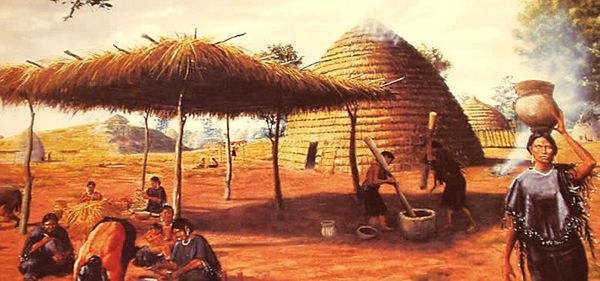
Originally settling around 700-800 along the Arkansas River, and stretched all the way out to the Red, Sabine, Angelina, and Neches rivers. This territory took up present-day Northeast Texas, parts of Arkansas and Louisiana. Throughout their miles of territory, there were over 25 different close-knit groups, the majority of which were settled amongst the Red River’s bend. They lived in this same area for over a thousand years, which sets them apart from many other native tribes throughout present-day Texas.
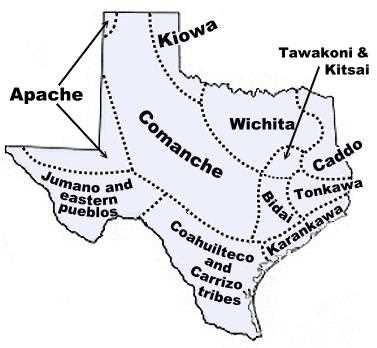
1500’s
Cabeza de Vaca who was a Spanish explorer was with a group of people who took over Caddo territories around 1535 to 1536. This was then in fact followed by Hernando de Soto’s explorations that ended up taking over the area in East Texas in 1542. These explorations consisted of fights with tribes, slave trades, and ambushes.
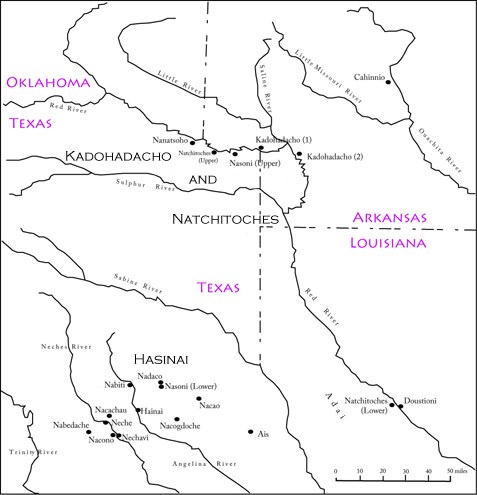
When Europeans came into contact with the Caddos, they were predominantly comprised of three divisions; The Hasinai confederacy, The Kadohadacho confederacy, and the Natchitoches confederacy.
1600’s
European contact brought in disease, leading to almost a 90% decline in population in the later of the century, dropping the population to only 10,000. As a result, they formed much smaller groups and they lived primarily in East Texas. In 1686, the French and Spanish claimed Caddo land and created an alliance in terms of economic resources. As a result, it strengthened the Caddoan political structure and aided in their internal flourishment. This relationship especially with the Spanish became opportunistic for the Spanish as they attempted to Christianize the Caddoan people. They proceeded to be unsuccessful as the Caddo people had their internal strength and loyalty to their religion.
1800s
Anglo migration into the Caddo territory, caused them to lose areas of their land that they had for over 1000 years. This caused them to scatter across the East of Texas. Alabama and Coushatta tribes proceeded to immigrate to Texas and Caddo territory, from eastern territories. Caddo settlements now lay well away from El Camino Real de los Tejas.

As a result, the Chief gave up land to the United States which was in present-day Caddo Parish which is in Louisiana, and Miller County which is in Arkansas. As a result, they were solely located on Texan and Mexican land.
The Hasinai, Natchitoches, and Kadohadacho confederacies were pushed out of East Texas by the Anglo in the 1840s. As a result the Caddos completely lost their original sacred land. As a direct result, Texas allowed the US to have a Caddoan reservation near present-day Graham, Texas
Caddo Music
Music in the form of songs and dancing is the core of a great deal of Caddo tradition. Song and dance are frequently used in a lot of ceremonial and social activities and have been means for keeping their culture alive. After their removal and consistent historical relocation, it has been one of the only ways to keep their cultural and social identity. It has been the predominant means for history to be brought forward and is a predominant tie to their history. Their most predominant culturally significant types of musical uses are the Turkey Dance and Drum Dance. (note: should I go more into these?)
Drum Dance
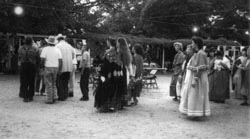
The Caddoan Drum Dance is a sacred dance accompanied by the playing of a drum. These dances and songs typically represent the traditions and history of the Caddoan People. Their mythological beliefs behind the origins of the earth and people are often reflected through the plethora of songs this dance can be accompanied with. The dance is done typically with a male lead, who holds and plays a small drum which gets played by 4 fingers. The male lead gets followed as he walks in a counter-clockwise motion, by the females, who all walk in a circle. Rhythmically, they are intended to follow the movement of the earth.
Turkey Dance
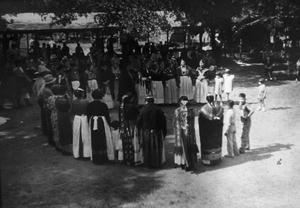
The Turkey Dance is also recognized under the name “Victory Dance.” This alternate title is a result of the time and reason, which is the way it is meant to honr and celebrare the return of warriors. The songs that are recorded can represent specific battles such as the battles with the Osage, Choctaw, Apache, and Tonkawa.This Caddoan culutral artform is only done amonsgt women until the end whixh men are invited to join in, but only through invitation. It
In terms of present-day, Caddoan music has internally been recorded as a means to preserve culture and tradition. More recently, there has seemed to be a loss of knowledge of the cultural songs, and elders have encouraged the youth to listen to recordings to keep the history alive.
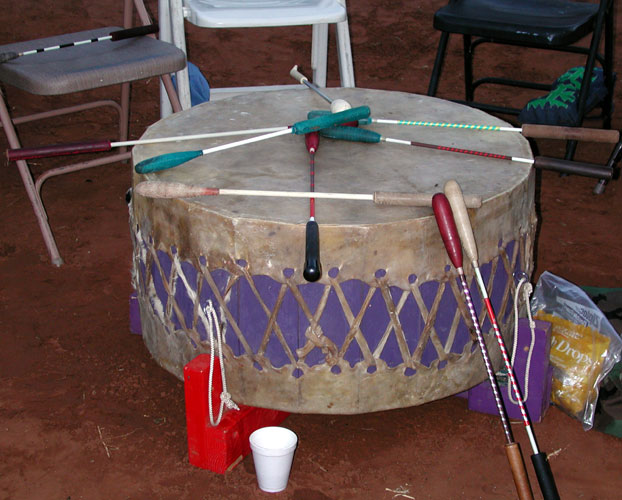
The Caddo Lullaby
Lyrics
ma ma ma ma ma ma
ma ma ma ma ma ma
ma ma ma ma
ma ma ma ma
hai iki he, hai iki he
[Go to sleep, go to sleep]
gai yo ti si, gai yo ti si
[My baby, my baby]
he iki he, ma ma
[Go to sleep, rna rna]
The Caddo lullaby is a song sung by the mother to their children, as a way to try to get them to sleep. Alot less grand than the other ways that Caddo people use music, however, there’s still a great deal of cultural significance in this piece.
The Caddonan Language
The Caddonan language is a combination of linguistic elements from Pawnee, Arikara, Wichita, and Kichai languages. Each group and band derive its own dialect however the majority of these elements are vastly understood and communicated.
Sources
Alexander, Kathy Weiser. “Caddo Tribe.” Legends of America, https://www.legendsofamerica.com/caddo-tribe/.
“Caddo Timeline.” National Parks Service, U.S. Department of the Interior, https://www.nps.gov/elte/learn/historyculture/caddo-timeline-european-influence-and-interaction.htm.
Lee, Dayna Bowker. Lousiana Folklife, https://www.louisianafolklife.org/lt/Articles_Essays/creole_art_caddo_homecomin.html.

